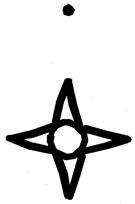Anthropology, Department of

Nebraska Anthropologist
Date of this Version
1995
Document Type
Article
Abstract
Archaeological surveys should be designed to better understand how past people interacted with their environment. An accurate survey should cover a group's range size in order to get a true representation of the diversity of the group's activities. Range size is defined as the total area of land over which a group moves and procures resources. Past studies of hunter gatherer range have focused on stylistic boundaries of pottery and stone tools. Optimal Foraging Theory has been used to better understand hunter gatherer territoriality and it can be used as a frame of reference for understanding range size as well. By examining two modem hunter gatherer groups, the G/wi and the !Kung, it becomes obvious that subtle environmental differences have large consequences in the group's range size and subsistence base. Archaeologists will be able to design more accurate surveys by better understanding the ancient environment and how it would have affected past hunter gatherers.


Comments
Published in Nebraska Anthropologist Vol. 12 (1995-1996). Copyright © George MacDonell; published by The University of Nebraska-Lincoln AnthroGroup.